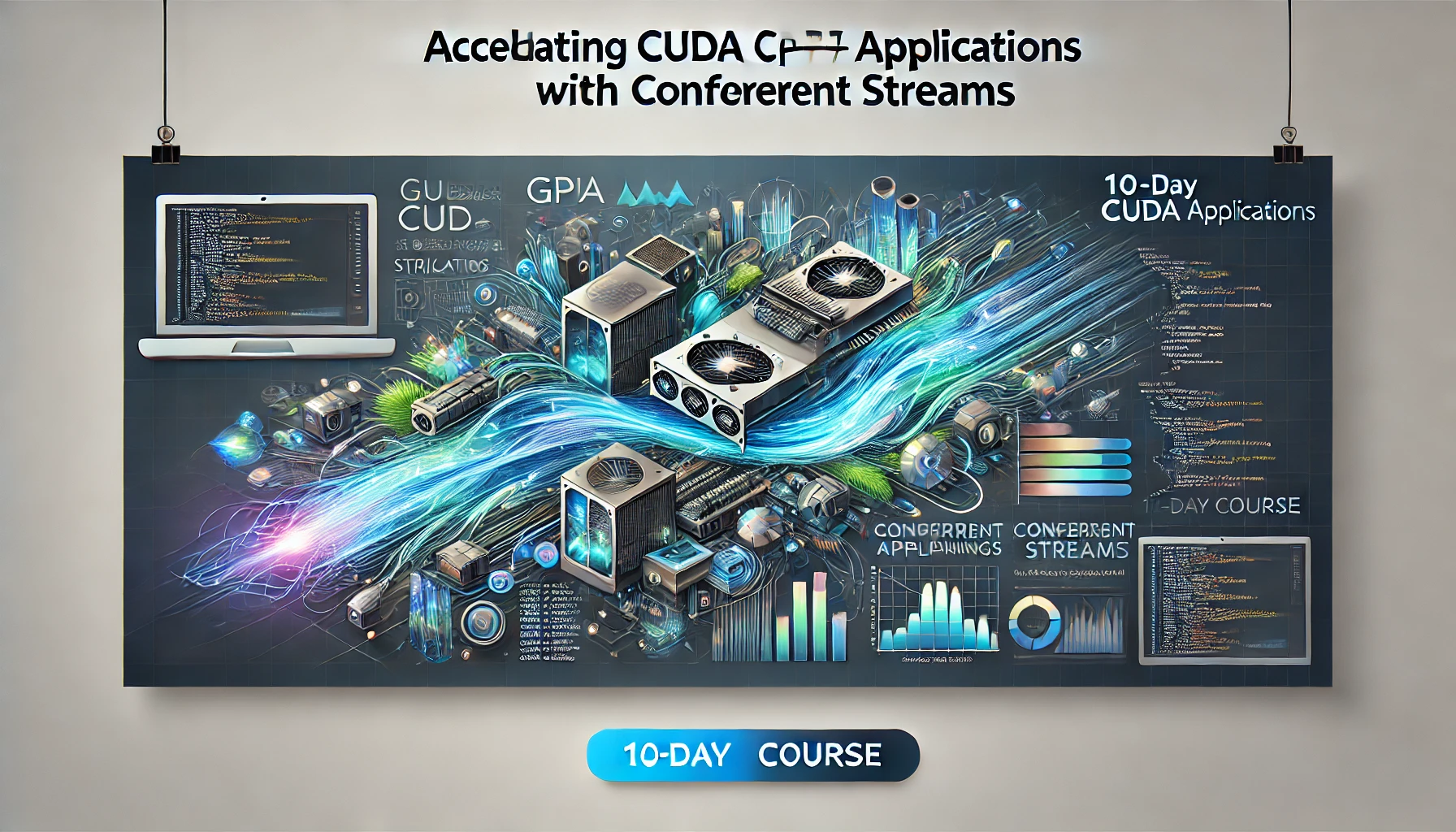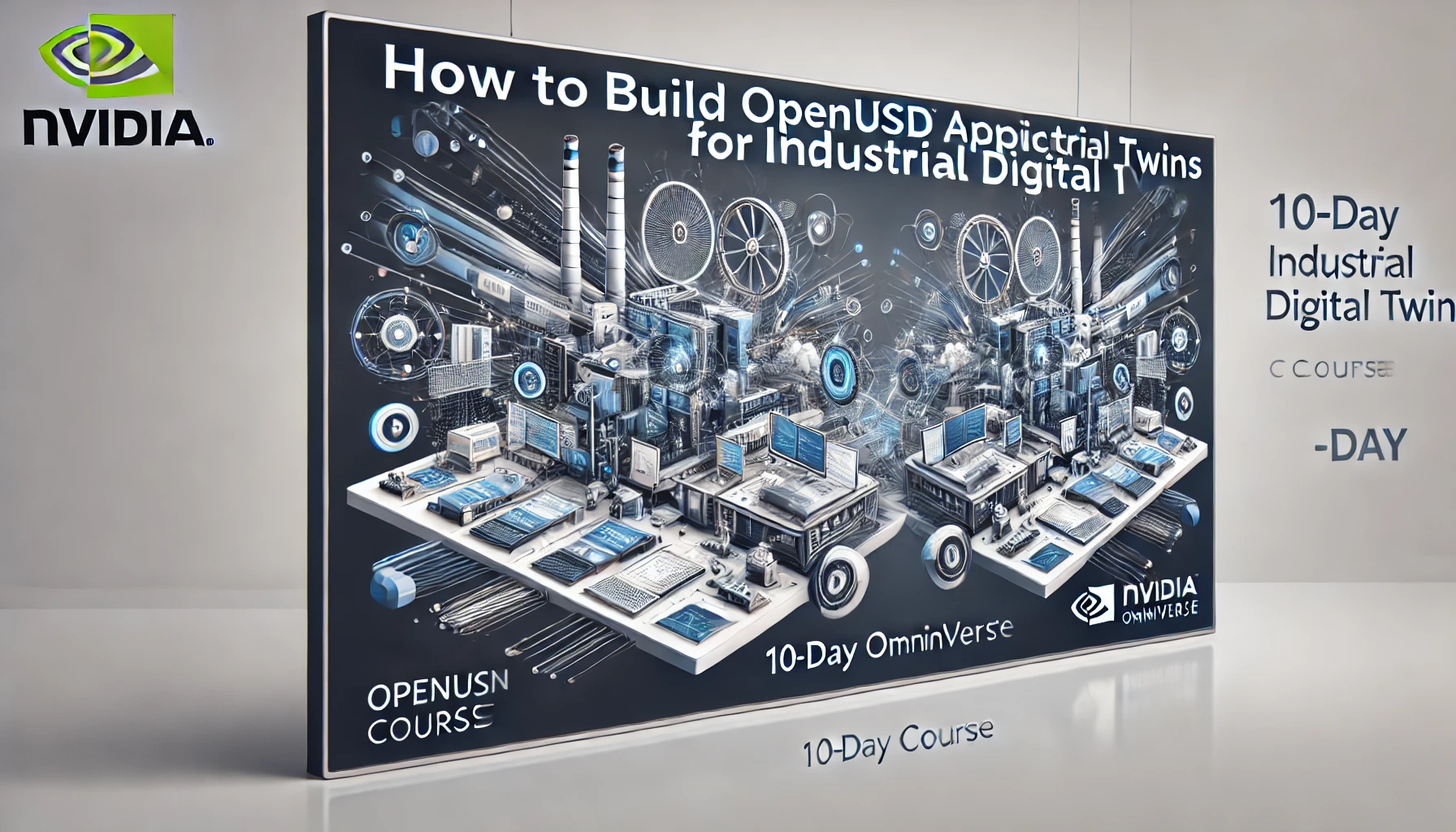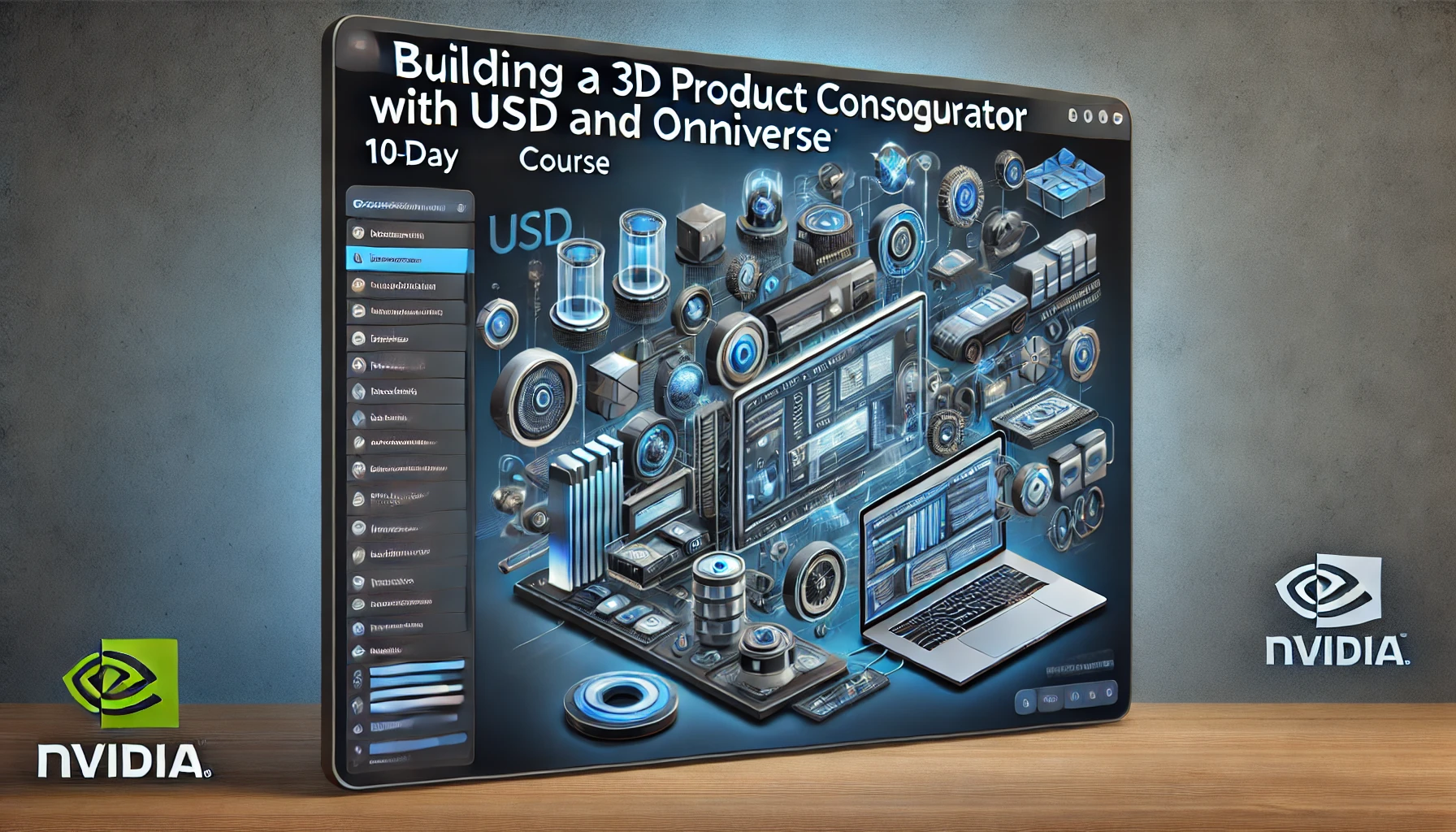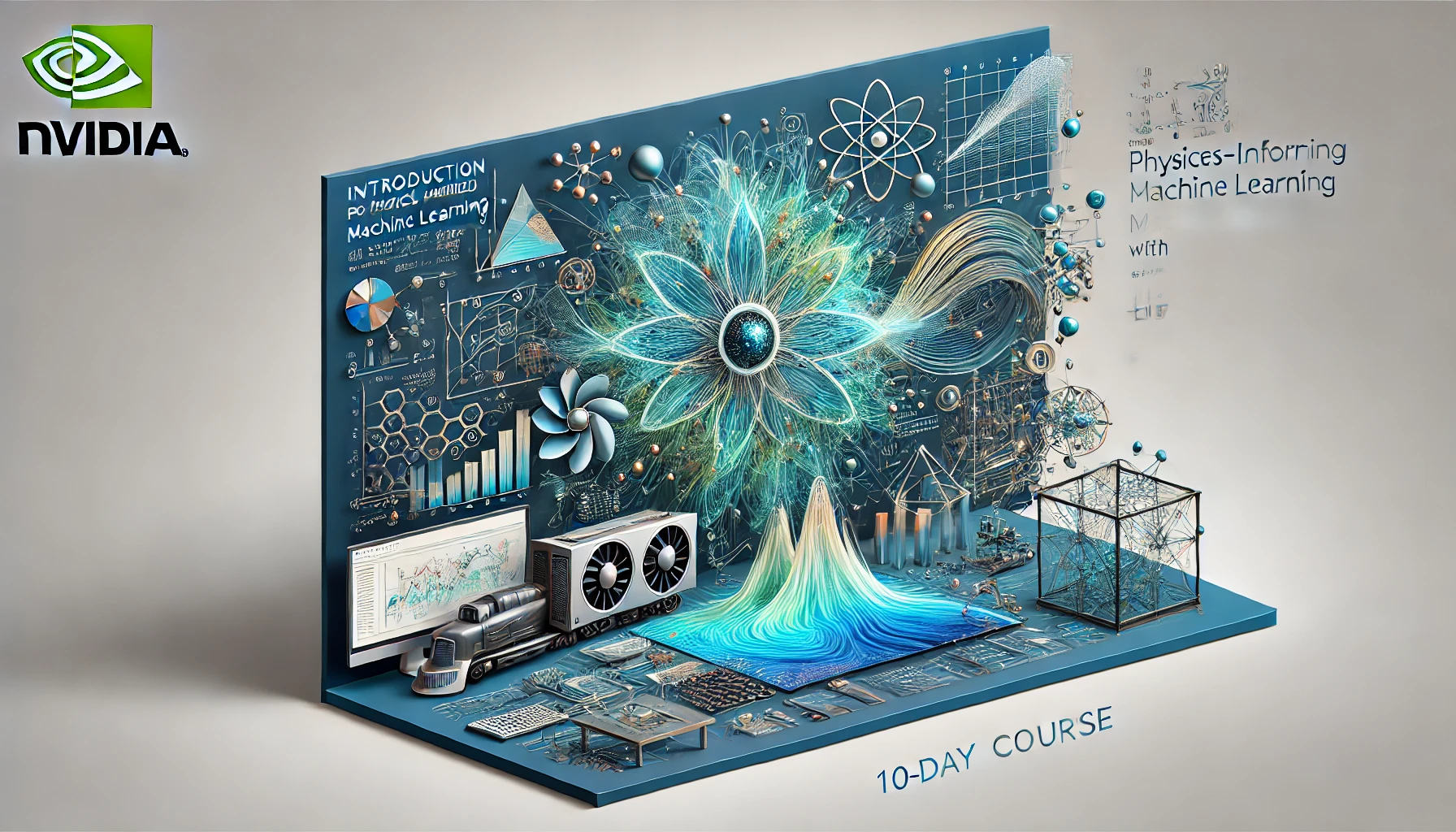Accelerating CUDA C++ Applications with Concurrent Streams
1. About the Course
“Accelerating CUDA C++ Applications with Concurrent Streams” is an advanced 10-day course designed to help developers and engineers optimize their CUDA C++ applications by leveraging concurrent CUDA streams, copy/compute overlap, and performance profiling with NVIDIA Nsight Systems. As applications become more complex and performance-critical, understanding how to efficiently manage and utilize GPU resources is key to achieving maximum throughput and responsiveness.
This course delves into the techniques of using concurrent streams in CUDA to perform multiple operations simultaneously, effectively overlapping data transfers with computation. Participants will gain hands-on experience in writing, profiling, and optimizing CUDA C++ code to achieve high performance. By the end of this course, participants will have the knowledge and skills necessary to significantly accelerate their CUDA applications.
2. Learning Objectives
By the end of this course, participants will be able to:
- Understand the fundamentals of concurrent CUDA streams: Grasp the core concepts of CUDA streams and how they can be used to parallelize operations.
- Implement concurrent streams in CUDA C++: Write CUDA C++ code that utilizes multiple streams to perform concurrent operations efficiently.
- Optimize applications using copy/compute overlap: Apply techniques to overlap data transfers with computations, reducing idle time and improving throughput.
- Profile and optimize performance using Nsight Systems: Utilize NVIDIA Nsight Systems to profile, debug, and optimize CUDA applications, focusing on stream concurrency.
- Develop high-performance CUDA applications: Design and implement CUDA applications that fully leverage concurrent streams and copy/compute overlap for optimal performance.
3. Course Prerequisites
This course is designed for developers with a background in CUDA programming and a good understanding of parallel computing. The prerequisites include:
- CUDA C++ Programming: Proficiency in CUDA C++ programming, including experience with kernels, memory management, and basic parallel execution.
- Basic Understanding of Parallel Computing: Familiarity with parallel computing concepts, such as threading and synchronization.
- Experience with Linux/Command Line Tools: Comfort with Linux operating systems and command-line tools, as most CUDA development is done in Linux environments.
- Basic Knowledge of Profiling Tools: While not required, familiarity with performance profiling tools like NVIDIA Nsight Systems will be beneficial.
4. Course Outlines
This course is structured to progressively build your expertise in using concurrent CUDA streams and other optimization techniques in CUDA C++. The content is organized as follows:
- Introduction to Concurrent CUDA Streams: Overview of CUDA streams, their importance, and how they enable concurrency in GPU programming.
- Setting Up the CUDA Development Environment: Installation and configuration of necessary software tools, including CUDA Toolkit and Nsight Systems.
- Understanding Copy/Compute Overlap: Detailed exploration of copy/compute overlap and its role in improving performance.
- Writing Concurrent CUDA C++ Programs: Hands-on experience in writing CUDA C++ code that utilizes multiple streams for concurrent execution.
- Optimizing with Copy/Compute Overlap: Techniques to optimize data transfers and computation overlap, minimizing idle time.
- Introduction to NVIDIA Nsight Systems: Learning how to use Nsight Systems for profiling and analyzing CUDA applications.
- Profiling Concurrent Streams with Nsight Systems: Practical experience in profiling and optimizing CUDA applications that use concurrent streams.
- Advanced Stream Management Techniques: Exploring advanced techniques for managing and optimizing concurrent streams in CUDA applications.
- Integrating Optimization Techniques in CUDA Projects: Best practices for integrating stream concurrency and overlap techniques into existing CUDA C++ projects.
- Capstone Project: A hands-on project involving the development and optimization of a CUDA application using concurrent streams, copy/compute overlap, and Nsight Systems.
5. Day-by-Day Breakdown
Day 1: Introduction to Concurrent CUDA Streams
- Objectives: Understand the basics of concurrent CUDA streams and their importance in parallelizing operations.
- Topics:
- Overview of CUDA streams
- Benefits of using concurrent streams in GPU applications
- Introduction to CUDA stream APIs
- Activities:
- Reading materials on CUDA streams and their applications
- External link: NVIDIA CUDA Programming Guide
- Internal link: Regent Studies Advanced CUDA Courses
Day 2: Setting Up the CUDA Development Environment
- Objectives: Set up and configure the development environment for CUDA programming, including the installation of CUDA Toolkit and Nsight Systems.
- Topics:
- Installing CUDA Toolkit on Linux
- Setting up NVIDIA Nsight Systems for profiling
- Configuring the environment for CUDA stream programming
- Activities:
- Step-by-step installation and configuration guide
- Verifying the environment setup with sample CUDA code execution
Day 3: Understanding Copy/Compute Overlap
- Objectives: Learn the principles of copy/compute overlap and its role in optimizing CUDA applications.
- Topics:
- Introduction to copy/compute overlap
- Benefits of overlapping data transfers and computations
- Techniques for implementing copy/compute overlap in CUDA
- Activities:
- Hands-on exercises to explore and implement copy/compute overlap
Day 4: Writing Concurrent CUDA C++ Programs
- Objectives: Write, compile, and run CUDA C++ programs that leverage multiple streams for concurrent execution.
- Topics:
- Writing CUDA code with multiple streams
- Managing memory and data transfers in concurrent streams
- Synchronization and dependencies in CUDA streams
- Activities:
- Write and test a simple CUDA program that uses concurrent streams
Day 5: Optimizing with Copy/Compute Overlap
- Objectives: Apply techniques to optimize CUDA applications using copy/compute overlap.
- Topics:
- Optimizing data transfer with copy/compute overlap
- Techniques for minimizing idle time in CUDA applications
- Best practices for combining streams and overlap for maximum performance
- Activities:
- Implement and benchmark copy/compute overlap in a CUDA application
Day 6: Introduction to NVIDIA Nsight Systems
- Objectives: Learn how to use NVIDIA Nsight Systems to profile CUDA applications and identify performance bottlenecks.
- Topics:
- Overview of NVIDIA Nsight Systems
- Setting up and using Nsight Systems for profiling
- Analyzing application performance with Nsight Systems
- Activities:
- Profile a sample CUDA application using Nsight Systems
Day 7: Profiling Concurrent Streams with Nsight Systems
- Objectives: Gain hands-on experience in profiling and optimizing CUDA applications that use concurrent streams.
- Topics:
- Profiling concurrent CUDA streams with Nsight Systems
- Identifying and resolving performance bottlenecks
- Using Nsight Systems to optimize stream concurrency
- Activities:
- Profile and optimize a CUDA application using concurrent streams
Day 8: Advanced Stream Management Techniques
- Objectives: Explore advanced techniques for managing and optimizing concurrent streams in CUDA applications.
- Topics:
- Advanced strategies for stream management
- Optimizing memory usage with concurrent streams
- Best practices for stream synchronization and dependencies
- Activities:
- Apply advanced stream management techniques to a CUDA application
Day 9: Integrating Optimization Techniques in CUDA Projects
- Objectives: Learn best practices for integrating stream concurrency and overlap techniques into existing CUDA C++ projects.
- Topics:
- Integrating concurrent streams into existing projects
- Managing dependencies and ensuring compatibility
- Profiling and optimizing integrated CUDA projects
- Activities:
- Integrate and optimize stream concurrency techniques in a sample project
Day 10: Capstone Project
- Objectives: Apply all the knowledge gained throughout the course to develop and optimize a CUDA application using concurrent streams, copy/compute overlap, and Nsight Systems.
- Topics:
- Project planning and design
- Coding, profiling, and optimizing the application
- Presenting the project and discussing the results
- Activities:
- Work on a real-world CUDA project, profile and optimize it using concurrent streams and Nsight Systems
6. Learning Outcomes
By the end of “Accelerating CUDA C++ Applications with Concurrent Streams,” participants will be able to:
- Develop CUDA applications using concurrent streams: Confidently write and optimize CUDA C++ code that leverages concurrent streams for parallel execution.
- Implement copy/compute overlap for performance optimization: Apply techniques to overlap data transfers and computations, improving overall application performance.
- Use NVIDIA Nsight Systems for profiling and optimization: Effectively profile and optimize CUDA applications using NVIDIA Nsight Systems, focusing on stream concurrency.
- Explore advanced stream management techniques: Utilize advanced strategies for managing and optimizing concurrent streams in complex CUDA applications.
- Integrate stream concurrency into existing CUDA projects: Seamlessly incorporate concurrent streams and overlap techniques into existing CUDA C++ projects, ensuring compatibility and performance gains.
- Complete a real-world CUDA project: Demonstrate the ability to develop, profile, and optimize a complete CUDA application using concurrent streams through a capstone project.
Participants will complete the course with a strong understanding of concurrent CUDA streams, practical experience in optimizing CUDA C++ applications, and the ability to leverage advanced tools like Nsight Systems for high-performance computing. This course is essential for developers and engineers aiming to optimize their CUDA applications for maximum efficiency.
This course outline is designed to be both informative and engaging, providing participants with the tools and knowledge necessary to excel in CUDA programming with concurrent streams. Whether you are looking to enhance your current projects or expand your expertise in high-performance computing, this course offers the guidance and insights needed to succeed.




